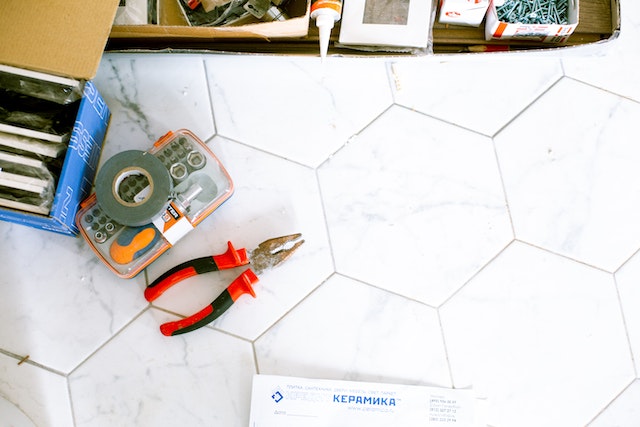
When renting out a property, it’s natural for it to depreciate over time due to everyday, normal use by a tenant. This is what is referred to as “normal wear and tear”.
But while it can be easy to define what normal wear and tear is, it’s usually daunting to know what exactly it constitutes. What kind of damage is a torn carpet, faded paint, missing tiles, a smashed bathroom mirror, or dirty grout?
As a landlord, knowing what constitutes what kind of damage is key. Remember, wrongfully withholding your tenant’s security deposit can have legal and financial ramifications.
As a landlord, you have to treat your tenants fairly and abide by important local and federal laws. And that can only be the case if you have the right knowledge.
What Is Normal Wear and Tear?
The definition of normal wear and tear varies depending on state law. In the state of Texas, it means deterioration that results from the intended use of a dwelling. The deterioration, however, doesn’t include that which occurs from carelessness, negligence, accident, abuse, or misuse.
Any rental property will undergo this type of deterioration as long as it’s occupied by a tenant. You can, for instance, expect dull or slight discoloration on tile floors from being walked on. Of course, the longer your unit is occupied, the more wear and tear to expect.

What Are Common Examples of Normal Wear and Tear on a Property?
You can expect the natural deterioration of many parts of your rental property. As your tenant uses fixtures or appliances and walks through the property, normal wear and tear will occur.
Below are examples of normal wear and tear in Texas in a rental property.
Lightly scratched tiles
Faded carpet
Faded or bubbling paint
Dirty grout
A loose door handle
A squeaky door
Cracks on walls or floors
Partially clogged sinks
Worn enamel in bathtubs or toilets
A torn wallpaper
As a landlord, it’s your responsibility to fix damage resulting from normal wear and tear. Withholding your tenant’s deposit for such damage would constitute wrongful withholding.
In Texas, you can be responsible for paying the tenant up to three times the wrongfully withheld amount plus court and attorney fees. It would also mean losing the right to make any deductions, as well as paying attorney fees that your tenant incurred when trying to recoup their deposit.
What Damage Is Beyond Normal Wear and Tear?
Damage in excess of normal wear and tear is also referred to as unexpected or excessive property damage. This kind of damage harms the normal functioning of a property. It results from abuse, misuse, neglect, or carelessness on your tenant’s part.

Below are examples of damage exceeding normal wear and tear:
Unapproved property alterations
Missing or broken tiles
Torn wallpaper
Broken or chipped sink/bathtub enamel
Missing doors or windows
A smashed bathroom mirror
Not all of these damages occur as a result of a tenant’s actions. Some can also result from your negligence as a landlord. Take, for instance, a cracked roof or ceiling. That’s why it’s important that you inspect your property from time to time.
Neglecting your maintenance duties can even end up rendering your property uninhabitable. This can bring about a host of issues for you, including your tenant obtaining the right to repair the issue themselves and deducting the costs of the repairs from their monthly rent payments.
When Can You Use a Tenant’s Security Deposit?
The only time you can pull from your tenant’s security deposit is when the damage exceeds normal wear and tear.
That said, this is where many conflicts involving landlords and tenants arise. Without proper due diligence, you may inappropriately make deductions for damages that are normal wear and tear. In turn, in the absence of a truce, your tenant may move to court to seek legal redress.

What Can You Do to Minimize Damage Exceeding Normal Wear and Tear?
There are a couple of things you can do to minimize careless property damage caused to your property. The following are some tips to get you started.
1. Document Existing Damage before a Tenant Moves In
Always perform a move-in and move-out inspection, and use a checklist to make sure you’re being thorough. During the inspection, document the initial property’s condition using photos and even video.
When the tenant vacates the unit, go through the same documentation process again. Check the move-in condition relative to the move-out condition. Has the tenant caused any damage exceeding normal wear and tear?
2. Rent to Quality Tenants to Minimize Damage
This is arguably the best way to minimize negligent property damage. The right tenant will care for your property like they would their own.
To find a great tenant, run a thorough screening process for all applicants. Among other things, screen them based on their proof of income, credit rating, and rental history.
3. Inspect Your Property Regularly
Regular rental inspections can be beneficial in several ways. By regularly inspecting your property, you may be able to:
Catch issues early before they become serious and costly.
Check for adherence to state safety, health, and structural codes.
Check whether the tenant is abiding by all rules and policies.

4. Hire a Reputable Property Management Company
Do you have a full-time job? Are you a newbie landlord still trying to know your way around things? Are you an out-of-state investor and not always available?
If you answered “yes” to any of these questions, hiring a reputable property management company can be helpful. And besides helping you inspect your property, a good company can also help you in other aspects as well. Such as, collecting rent, screening tenants, maintaining the unit, and marketing it.
Bottom Line
The return of a tenant’s security deposit is usually a point of conflict between landlords and tenants. However, with this guide, you should be able to note the differences fairly easily and make the right decisions.
For expert help, contact SGI Property Management Dallas. We are a quality property management company in Dallas, Texas. We can help you take care of all aspects of managing your rental properties.









